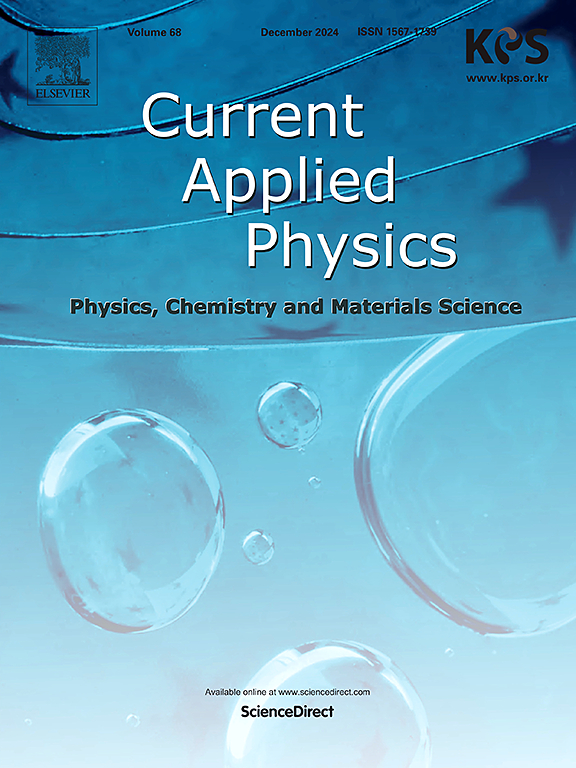Eliminating adhesive layers in silver metallization: A comparative study of glass cleaning methods for enhanced hydroxylation and adhesion
IF 2.4
4区 物理与天体物理
Q3 MATERIALS SCIENCE, MULTIDISCIPLINARY
引用次数: 0
Abstract
Achieving robust adhesion and cost-efficiency in silver (Ag) thin films is pivotal for advancing microelectronic applications, owing to Ag's exceptional low resistivity and thermal stability. This study investigates an optimized approach to hydroxylate glass substrates, effectively eliminating the reliance on conventional adhesive layers. Among five chemical cleaning methods evaluated, immersion in concentrated H₂SO₄, followed by thorough rinsing with deionized water and ultrasonication in ethanol, emerged as the most effective. This method produced highly hydrophilic surfaces with a contact angle (CA) of 6.6°. The resulting Ag films, deposited via physical vapor deposition, demonstrated excellent adhesion without peeling, while also exhibiting smooth and uniform surfaces ideal for subsequent functionalization. By streamlining substrate preparation, this methodology enhances the fabrication efficiency of high-performance microelectronic devices, offering a practical and scalable solution for industrial applications.

消除银金属化中的粘合层:增强羟基化和粘合的玻璃清洁方法的比较研究
由于银(Ag)薄膜具有优异的低电阻率和热稳定性,因此在银(Ag)薄膜中实现强大的附着力和成本效益对于推进微电子应用至关重要。本研究研究了一种优化的方法来羟基化玻璃基板,有效地消除了对传统粘合剂层的依赖。在评估的五种化学清洗方法中,浸泡在浓硫酸中,然后用去离子水彻底冲洗,超声波在乙醇中清洗是最有效的。该方法制备了接触角(CA)为6.6°的高亲水性表面。通过物理气相沉积沉积得到的银膜具有良好的附着力而不会剥落,同时表面光滑均匀,非常适合后续的功能化。通过简化衬底制备,该方法提高了高性能微电子器件的制造效率,为工业应用提供了实用且可扩展的解决方案。
本文章由计算机程序翻译,如有差异,请以英文原文为准。
求助全文
约1分钟内获得全文
求助全文
来源期刊

Current Applied Physics
物理-材料科学:综合
CiteScore
4.80
自引率
0.00%
发文量
213
审稿时长
33 days
期刊介绍:
Current Applied Physics (Curr. Appl. Phys.) is a monthly published international journal covering all the fields of applied science investigating the physics of the advanced materials for future applications.
Other areas covered: Experimental and theoretical aspects of advanced materials and devices dealing with synthesis or structural chemistry, physical and electronic properties, photonics, engineering applications, and uniquely pertinent measurement or analytical techniques.
Current Applied Physics, published since 2001, covers physics, chemistry and materials science, including bio-materials, with their engineering aspects. It is a truly interdisciplinary journal opening a forum for scientists of all related fields, a unique point of the journal discriminating it from other worldwide and/or Pacific Rim applied physics journals.
Regular research papers, letters and review articles with contents meeting the scope of the journal will be considered for publication after peer review.
The Journal is owned by the Korean Physical Society.
 求助内容:
求助内容: 应助结果提醒方式:
应助结果提醒方式:


